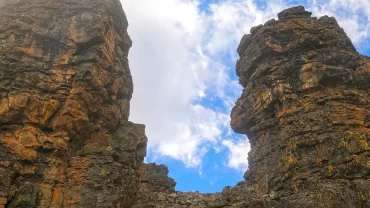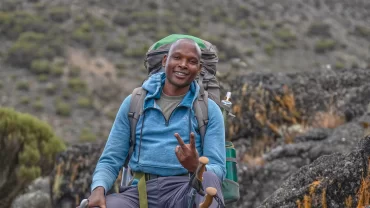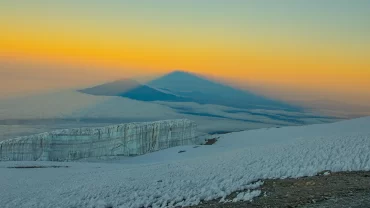Mount Kilimanjaro, the tallest mountain in Africa, stands at 5,895 meters (19,341 feet) above sea level. Located in Tanzania, this legendary peak attracts thousands of climbers from around the world each year. But what makes Kilimanjaro unique compared to other mountains? From its geological formation to its diverse ecosystems and cultural significance, this mountain offers an unparalleled climbing experience. In this article, we explore Kilimanjaro’s distinct features through the perspective of an experienced guide, Dismass, who has spent years leading climbers to the summit.
The Geology of Kilimanjaro: A Mountain Unlike Any Other
Mount Kilimanjaro is a stratovolcano, formed over millions of years through volcanic activity. Unlike many other famous peaks, Kilimanjaro is not part of a mountain range—it stands alone as the highest free-standing mountain in the world. The mountain consists of three volcanic cones:
- Kibo – The highest and only dormant cone, where Uhuru Peak is located.
- Mawenzi – Rugged and eroded, it’s the second-highest peak.
- Shira – The oldest and lowest cone, now collapsed and forming a plateau.
Its geological formation makes Kilimanjaro a fascinating climb, offering diverse landscapes ranging from lava formations to vast glaciers, all shaped by its volcanic history.
The Ecosystem Diversity: Climbing Through Five Climate Zones
One of the most remarkable aspects of Kilimanjaro is the drastic shift in climate zones as climbers ascend the mountain. Few places in the world allow adventurers to experience such biodiversity in a single trek. The five climate zones include:
- Cultivation Zone (800m–1,800m): Rich farmlands with coffee plantations and banana fields.
- Rainforest Zone (1,800m–2,800m): Lush tropical forests, home to monkeys, birds, and unique plant species.
- Moorland Zone (2,800m–4,000m): Open landscapes with giant lobelias and other high-altitude plants. senecio kilimanjari (groundsels)
- Alpine Desert Zone (4,000m–5,000m): Harsh, dry, and rocky terrain with extreme temperatures.
- Arctic Zone (5,000m–5,895m): A freezing, glacier-covered summit with breathtaking views.
Climbers journey through vastly different landscapes in just a few days, making Kilimanjaro a one-of-a-kind experience.
The Cultural Significance of Kilimanjaro
To the local Chagga people and Maasai communities, Kilimanjaro holds deep cultural and spiritual meaning. It has long been regarded as a sacred place, often appearing in myths and oral traditions. Many local legends describe it as the “House of God,” and it has played a role in Tanzanian identity for centuries.
Experienced guides like Dismass often share fascinating cultural stories along the trek, helping climbers connect with the mountain on a deeper level. These stories, combined with warm Tanzanian hospitality, add to the magic of climbing Kilimanjaro.
Climbing Kilimanjaro: A Journey Unlike Any Other
Unlike Everest or other technical peaks, Kilimanjaro requires no specialized climbing skills or mountaineering equipment. However, it presents its own set of challenges, including altitude sickness, long trekking days, and unpredictable weather. Every year, climbers from all walks of life, from seasoned hikers to first-time adventurers, take on this challenge. The journey is as much mental as it is physical, making the sense of accomplishment at the summit even more rewarding.
Conservation and the Future of Kilimanjaro
Kilimanjaro’s glaciers are shrinking due to climate change, raising concerns about the mountain’s long-term environmental stability. Organizations and park authorities are working to preserve its unique ecosystem through conservation efforts, responsible tourism, and reforestation projects. Climbers are encouraged to follow Leave No Trace principles and support eco-friendly trekking companies to help protect Kilimanjaro for future generations.
Conclusion
So, what makes Kilimanjaro unique? Its combination of geological wonder, rich ecosystems, and cultural significance sets it apart from any other mountain on Earth. Whether you’re drawn to its fascinating volcanic history, the challenge of trekking through its five climate zones, or the deep cultural heritage surrounding it, climbing Kilimanjaro is truly a once-in-a-lifetime experience.
Ready to embark on your Kilimanjaro adventure? Join experienced guides like Dismass and discover firsthand why this legendary mountain continues to captivate climbers from around the globe.





Comment (0)